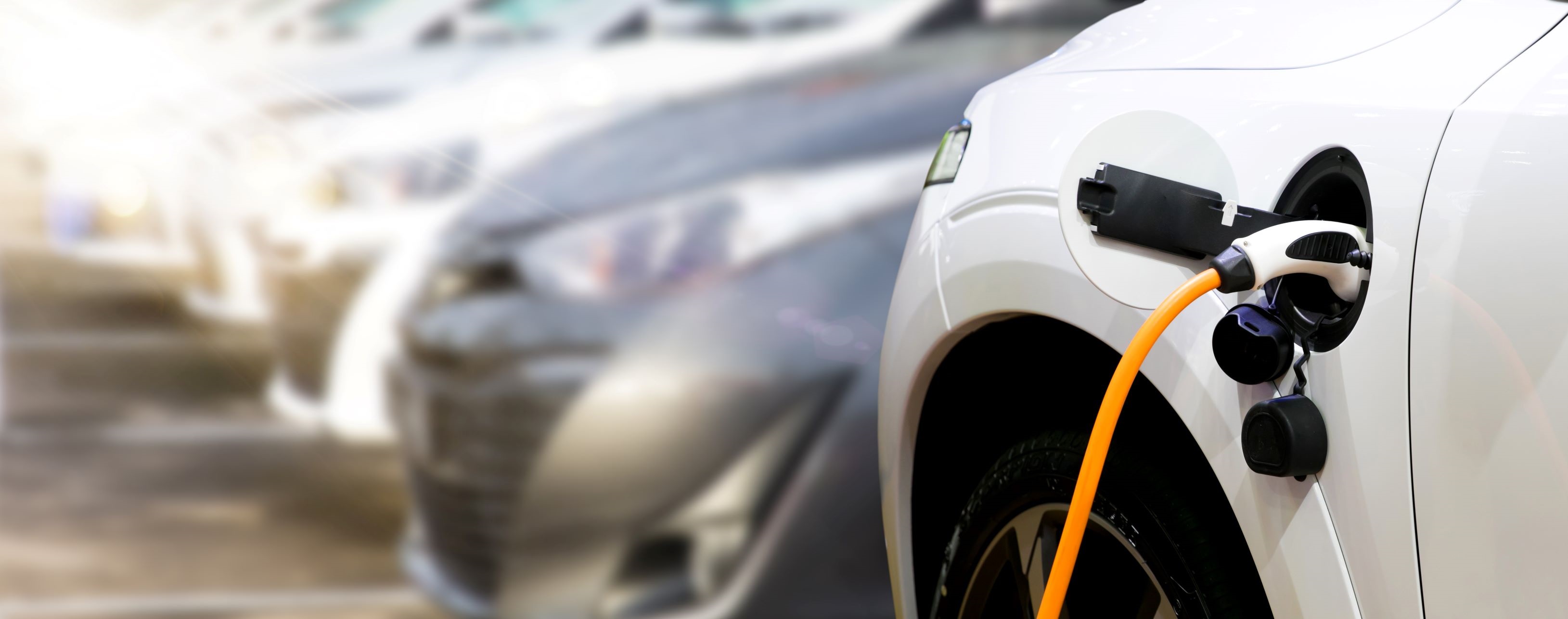Why Electric Vehicles?

EVs in Arlington
To directly address the planet’s climate crisis, Arlington County’s Community Energy Plan (CEP) is creating a carbon neutral Arlington by 2050. EV deployment is one of the key strategies to achieve this goal, through:
- Electrifying the County vehicle fleet by 2050.
- Accelerating electric vehicle adoption in the private and commercial sectors.
- Supporting a network of convenient charging stations throughout Arlington.
EVs offer lower total cost of ownership (TCO) than traditional internal combustion engine (ICE) vehicles. While EV purchase prices can be higher than ICE vehicles, the vehicle cost is typically offset by lower fuel costs and lower maintenance costs. Federal, state and utility incentive programs often provide additional financial benefits.
Electric vehicle adoption is growing rapidly in Arlington County. Plug-in electric vehicles represent 4% of registered vehicles and a much higher percentage of new vehicle sales. Electric vehicles have many benefits including:
Sustainable Transportation: Electric Vehicles
Webinar: Arlington has multiple modes of transportation. In recognition of National Drive Electric Week 2024, Arlington's Initiative to Rethink Energy (AIRE) hosted a webinar, "Car Free, Then EV: Arlington's Transportation", on sustainable transportation options for getting around the County. Presentation topics included transit options available (including EVs, e-bikes and public transit), AIRE’s e-bike voucher program and EV charging infrastructure in the County. Four expert panelists answered questions from the audience at the end of the session. Listen or read more about the sustainable transportation options across the County:
How do I charge?
To learn more about how to install a charging station, operate a charging station, or charge in public, visit the U.S. Department of Energy’s Alternative Fuels Data Center.
To locate a station, visit the U.S. Department of Energy’s Alternative Fueling Station Locator.
Loading alternative fueling station locator...
Find alternative fueling stations near an address or ZIP code or along a route in the United States. Enter a state to see a station count.
Save Money and Reduce Emissions:
- $6,000 – $10,000 average savings over vehicle lifetime, when switching to an EV. Fuel and maintenance cost savings can offset initial purchase prices.[1]
- 66% CO2 emissions reductions – The lifecycle savings potential of EVs operating on the Virginia Dominion Energy grid.[2]
- EVs can reduce hazardous air pollutant emissions which improves air quality and reduces negative health impacts of pollution, such as asthma.[4]
- Switching to an EV is equivalent to planting 77 trees over 10 years.[5]
- "In U.S. homes with electric vehicles (EVs), annual household electricity consumption for EV charging averaged 2,363 kilowatt-hours (kWh) in 2020, which is less than several other household appliances.”[6]
Electric Drive Cost Calculator
Tax Credits Available for Purchasing an EV
The Inflation Reduction Act (IRA) created Clean Vehicle Tax Credits that can be used towards new or used electric vehicles that meet specific requirements.
- If you purchased a new EV in 2022 or before, you may be eligible for a tax credit of up to $7500. See IRS details for more information.
- A new EV purchased in 2023 or later may be eligible for a tax credit of up to $7500*. See IRS details for more information.
- *The Department of Energy recently released requirements on the sourcing of battery components used in EVs. Beginning on Jan 1, 2024, some vehicles will still be eligible for 100% of the tax credit while some may only be eligible for 50% ($3750). Check the DOE's page on eligible EV makes and models to identify approved vehicles for tax credits and check with the manufacturer before purchasing.
- Purchases made towards a used EV may be eligible for a Used Clean Vehicle Credit with a 30% tax credit towards the sale price, at a maximum of $4000.
Consult with your tax professional when planning to utilize IRS tax credits.
Electric Bikes
Electric bikes are another cleaner mode of transportation and assist in local travel where hills and climbs may be required.
Electric or Internal Combustion Engine?
Arlington County conducted a Total Cost of Ownership Study to understand the costs of ownership between EVs and ICEs. In support of the implementation of the CEP’s transportation goals, the Total Cost of Ownership Study provides analysis to facilitate County government and private citizens in transitioning to electric vehicles. This includes a high-level market assessment, an examination of the County’s current vehicle fleet, estimates of emissions benefits from transitioning the County fleet to AEVs, and total cost of ownership forecasts for the most common vehicles throughout the community and the County fleet.
Webinar: Innovative EV Technology
Expert panelists discussed innovative EV technology, the energy transition, vehicle-to-grid, solar power and more.
Resources: